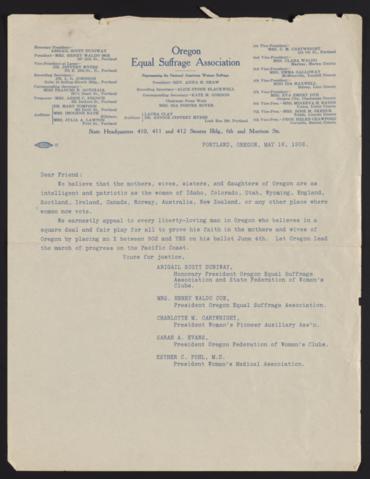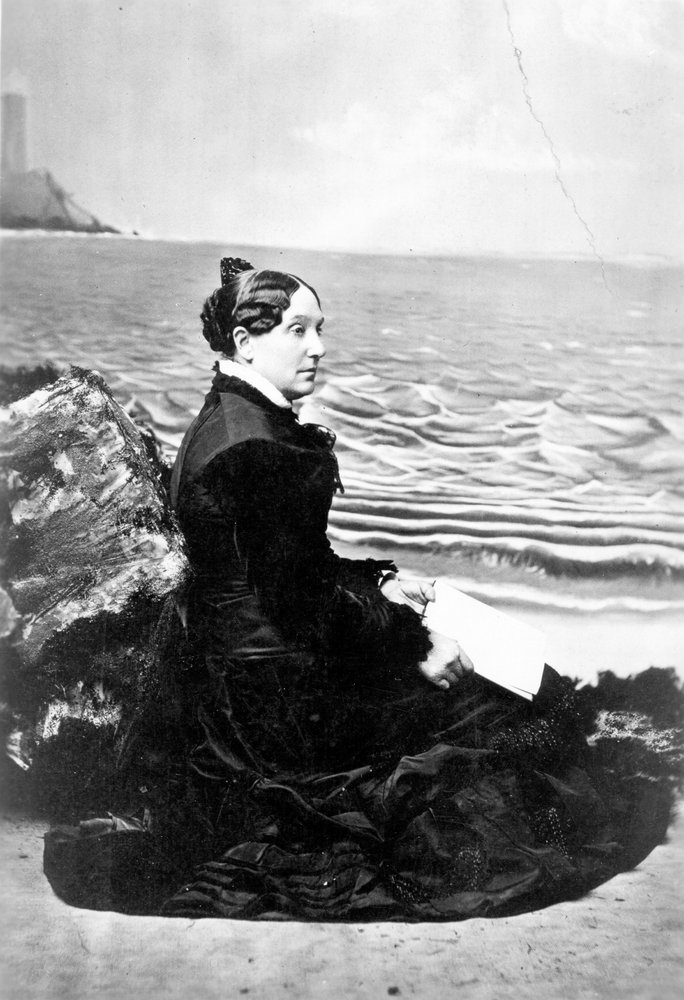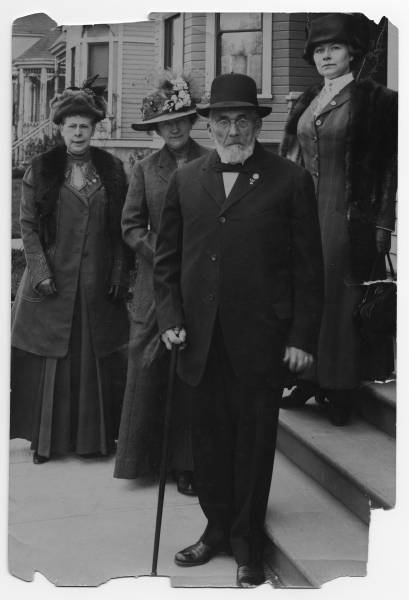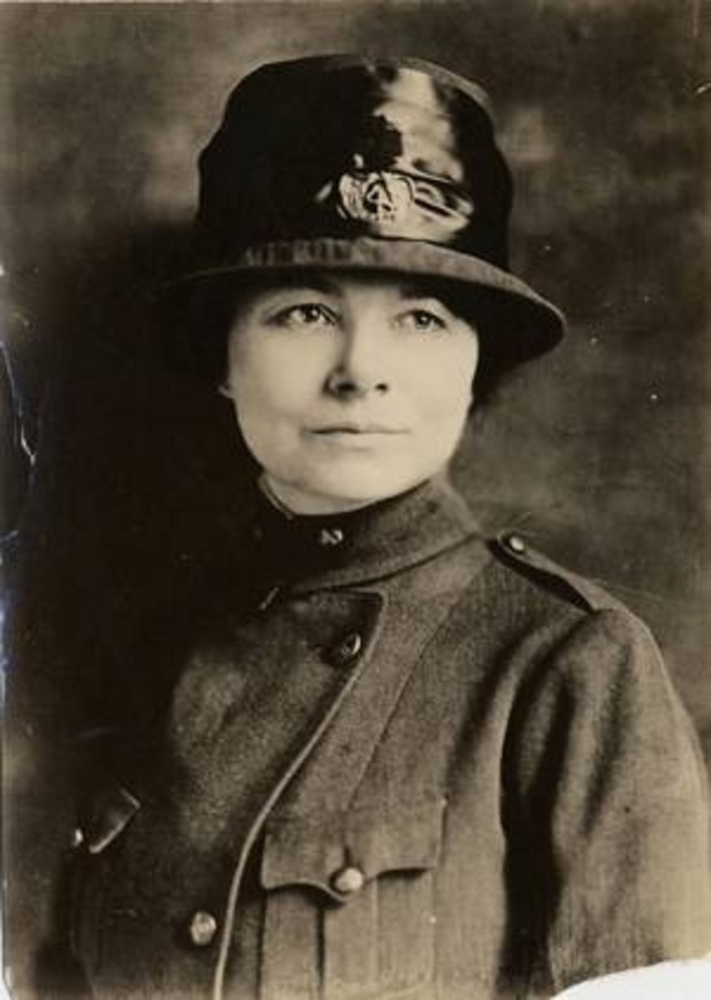Sarah A. Evans epitomized the characteristics of clubwomen of the United States from the 1890s to World War II. A leader in Oregon reform efforts, she left a strong legacy of activism for women and Progressive Era causes in Oregon.
Born in Bedford, Pennsylvania, in 1854, Sarah Ann Shannon graduated from the Lutherville Female Seminary in Maryland. She married William M. Evans in 1873, and the couple moved to Portland in 1894. They had three daughters: Laura Evans Smith, Gertrude Evans Chapman, and Elizabeth Evans Pettinger—who would follow her mother in club and political work in Oregon. William Evans died in 1917 from pneumonia.
When Evans arrived in Portland in 1894, she helped establish the early clubs and projects that would be a vital part of the city’s Progressive Era reform, linking the city with national trends in women’s organized activism. She was a charter member of the Portland Woman’s Club (1896) and a founder of the Oregon Federation of Women’s Clubs (1899), serving as president from 1905 to 1915. In 1901, Evans led the efforts of the two organizations to achieve legislative funding for public libraries in Oregon. She was an effective lobbyist for the bill in Salem, moving and acting within the political system even before Oregon women achieved the vote in 1912.
Pure food and milk were key parts of Progressive Era city reform, and Evans worked with clubwomen and the YWCA to establish the office of market inspector for the City of Portland in 1905. Mayor Harry Lane appointed her to the new post.
Evans worked with the Sacajawea Statue Association as part of the Lewis and Clark Exposition in 1905. She was an active woman suffrage leader in the Oregon campaigns of 1906 and 1912 and wrote the chapter on Oregon for the six-volume History of Woman Suffrage. For a decade, beginning in 1904, she edited the weekly “Women’s Club” column in the Oregon Journal, reporting on a wide range of activities in the state, raising awareness about women’s work and reform issues, and chronicling a valuable history in the process.
When the United States entered World War I in 1917, Evans, chair of the public health committee for the Oregon Federation of Women’s Clubs, raised funds for Oregon men wounded in the conflict. She served as honorary vice-chair of the Oregon branch of the Woman’s Committee of the Council of National Defense and coordinated Oregon’s first Liberty Loan drive in 1917.
After the war, Evans joined the newly formed League of Women Voters and continued her reform advocacy and work as market inspector. In 1934, she was involved in a car accident. She retired the next year, and the effects of the accident were with her until her death in 1940.
-
![Sarah Evans is in the front row with her hands folded.]()
Officers of the Oregon Federation of Women's Clubs, 1912.
Sarah Evans is in the front row with her hands folded. Oregon Historical Society Research Library, Digital Collections, Oregon Journal Negative Collection; Org. Lot 1368; Box 373; 0373G058
-
![The letter is signed by Abigail Scott Duniway, Mrs. Henry Waldo Coe, Charlotte M. Cartwright, Sarah A. Evans, and Esther C. Pohl.]()
Letter from Oregon Equal Suffrage Association, 1906.
The letter is signed by Abigail Scott Duniway, Mrs. Henry Waldo Coe, Charlotte M. Cartwright, Sarah A. Evans, and Esther C. Pohl. Oregon Historical Society Research Library, Digital Collections, Mss432_B3F5_004
Related Entries
-
Abigail Scott Duniway (1834-1915)
Outspoken and often controversial, Abigail Scott Duniway is remembered …
-
![Elizabeth Eggert (1848-1935)]()
Elizabeth Eggert (1848-1935)
Elizabeth Avery Eggert, a homeopathic physician, businesswoman, and act…
-
Esther Clayson Pohl Lovejoy (1869-1967)
Physician Esther Clayson Pohl Lovejoy took an active and significant ro…
-
![Harriet "Hattie" Redmond (1862-1952)]()
Harriet "Hattie" Redmond (1862-1952)
Harriet “Hattie” Redmond was a leader in the long struggle for Oregon w…
-
Harry Lane (1855-1917)
Harry Lane epitomized the spirit and activism of Oregon’s progressive r…
-
Woman Suffrage in Oregon
The campaign to achieve voting rights (also called suffrage or the fran…
Related Historical Records
Map This on the Oregon History WayFinder
The Oregon History Wayfinder is an interactive map that identifies significant places, people, and events in Oregon history.
Further Reading
Evans, Sarah A. “Oregon.” In History of Woman Suffrage, vol. 6: 1900-1920. New York: National American Woman Suffrage Association, 1922, 538-549.
Haarsager, Sandra. Organized Womanhood: Cultural Politics in the Pacific Northwest, 1840-1920. Norman: University of Oklahoma Press, 1997.
Scheppke, Jim. “The Origins of the Oregon State Library.” Oregon Historical Quarterly 107:1 (Spring 2006): 130-140.







